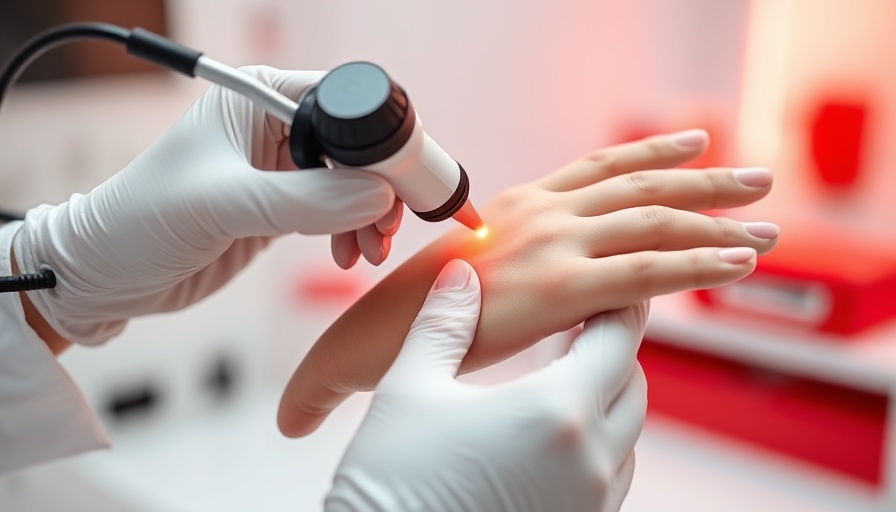
Innovations in Wound Healing: The Power of Sound
Recent studies suggest that frequency-specific sound could revolutionize how we approach healing wounds. Acoustic stimulation, particularly through the use of infrasound and low-frequency sound, enhances cellular activity, promoting tissue repair in a non-invasive manner. This innovative method not only shows promise in clinical settings but could significantly increase recovery speeds and improve patient experiences in dermatology.
Breaking Down Barriers: Isotretinoin for Facial Warts
A commonly prescribed treatment in dermatology, isotretinoin has shown remarkable efficacy beyond its usual application. A recent study have revealed that varying doses of oral isotretinoin can effectively treat recalcitrant facial flat warts, enhancing the quality of life for patients and alleviating anxiety associated with skin imperfections. This breakthrough opens new doors for treatments of skin conditions traditionally regarded as stubborn or difficult to manage.
The "Hats On" Challenge: Raising Awareness for Actinic Keratosis
As world awareness of skin conditions grows, dermatologists and skincare experts have rallied around the "Hats On" challenge, designed to spotlight actinic keratosis in anticipation of Global AK Awareness Day. This initiative pushes for education and preventive measures against this common skin condition, particularly important as warmer weather leads more people to engage in outdoor activities.
Botulinum Toxin A and Hyaluronic Acid: A New Treatment for Enlarged Pores
Combining botulinum toxin A with hyaluronic acid is a novel approach that dermatology research is exploring to tackle cosmetic concerns such as enlarged pores due to acne. This dual-action treatment not only enhances skin texture but also boosts patient satisfaction. Studies indicate that this combination can lead to significant improvements in skin appearance, helping individuals feel more confident regarding their skincare choices.
The Environmental Impact of Dermatology: A Call for Sustainability
In an age where environmental consciousness is paramount, dermatology must address its carbon footprint. The field is under scrutiny for practices that could be harmful to the environment, leading a push for sustainable methodologies in treatment and product use. Adopting eco-friendly practices can help mitigate the healthcare sector's impact on the planet, ensuring that dermatology can provide care while preserving our environment.
Call to Action: The Future of Skincare Lies in Knowledge
As research and technology continue to evolve in dermatology, staying informed is crucial for making effective skincare choices. Whether it's new treatment methods or awareness campaigns like the “Hats On” challenge, every bit of knowledge empowers individuals to take proactive measures in their skin health. For ongoing updates on the latest findings and expert opinions, be sure to subscribe to Dermatology Times!
 Add Row
Add Row  Add
Add 






Write A Comment